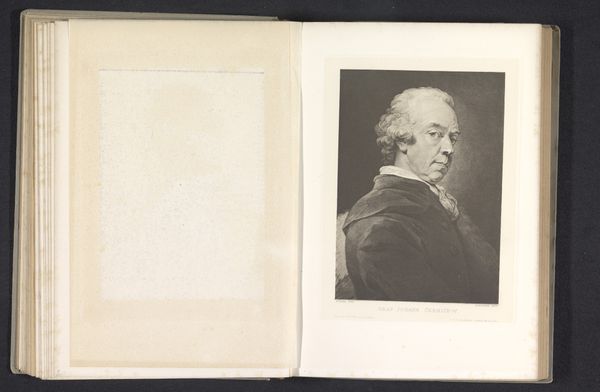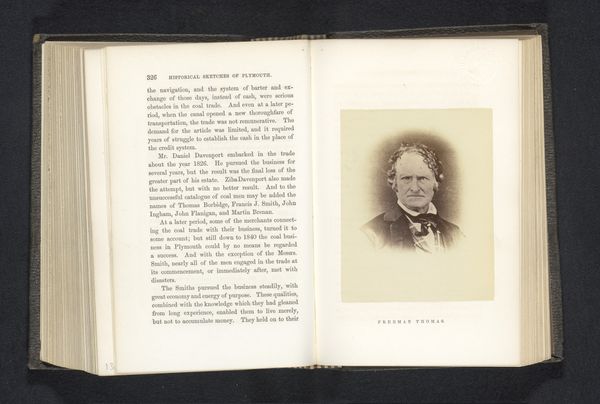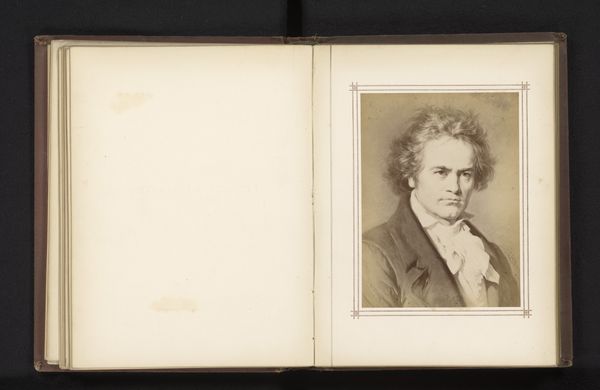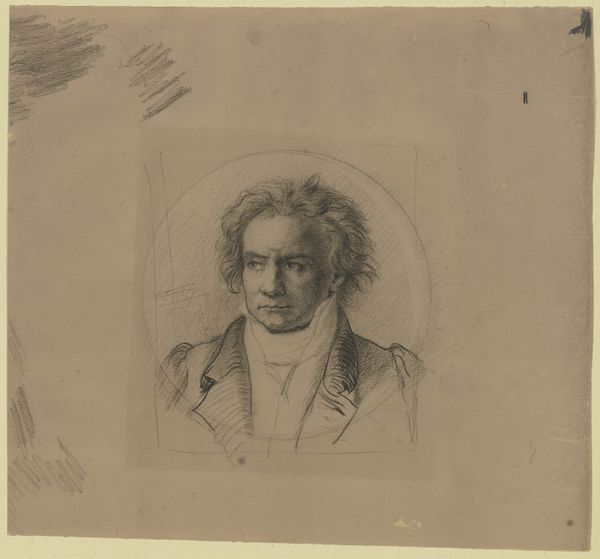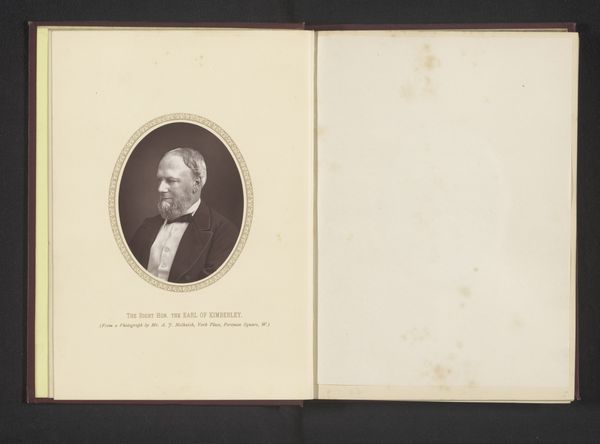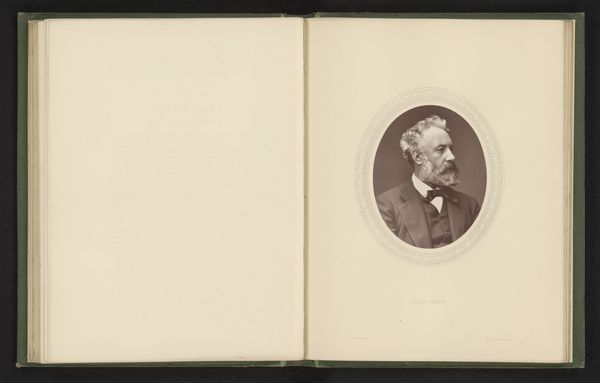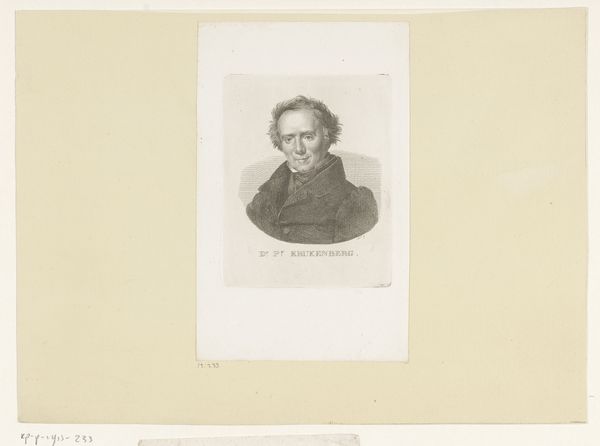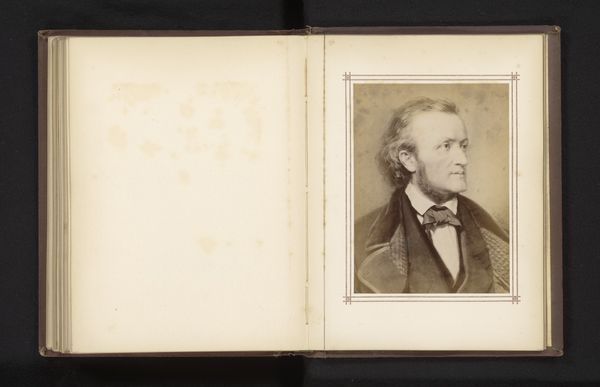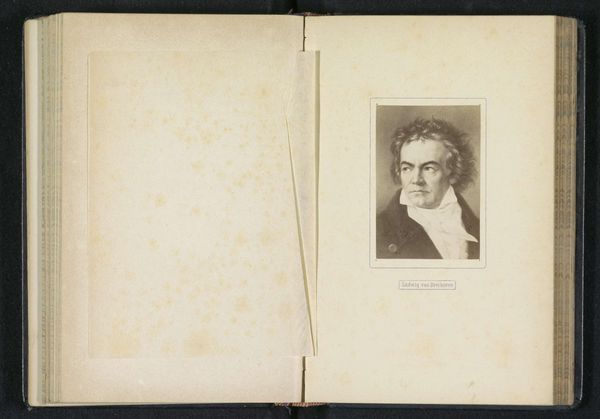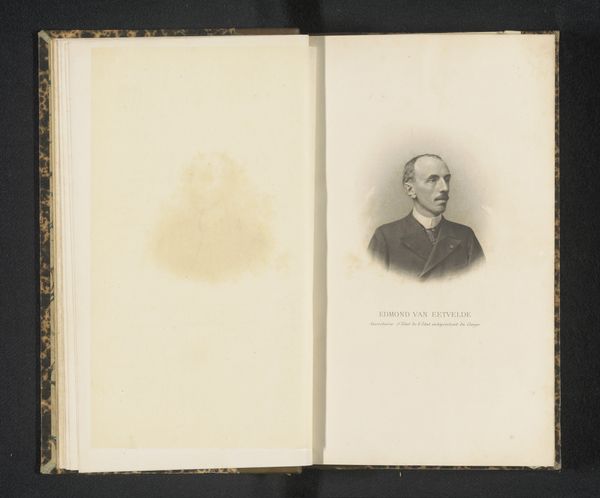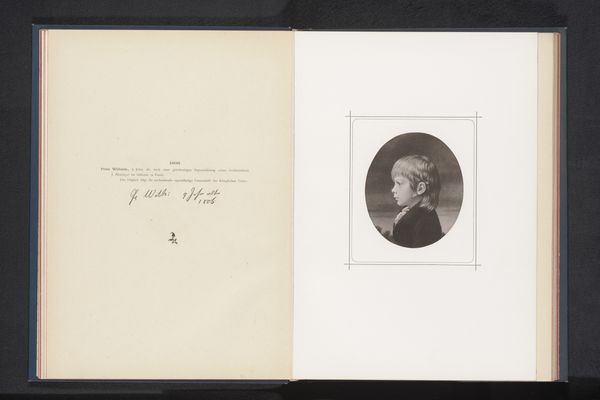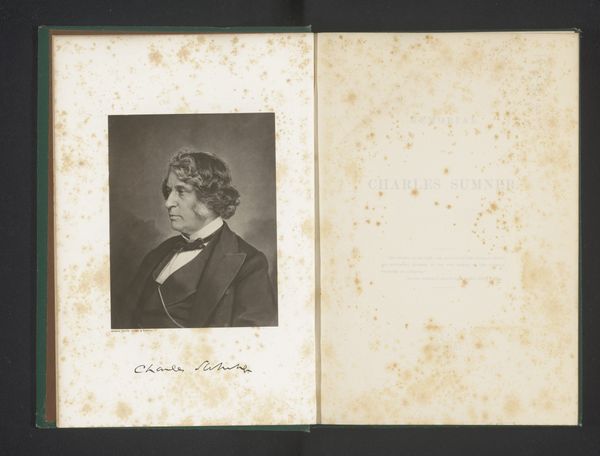
Fotoreproductie van een tekening, voorstellende een portret van een onbekende man before 1883
0:00
0:00
drawing, print
#
portrait
#
drawing
# print
Dimensions: height 174 mm, width 131 mm
Copyright: Rijks Museum: Open Domain
Curator: Looking at this photogravure, it's easy to think about accessibility and art in the age of mechanical reproduction. This piece, “Fotoreproductie van een tekening, voorstellende een portret van een onbekende man," dating to before 1883, showcases the early integration of photography into artistic practices. We can see the direct influence this is having. Editor: I am struck by the subject’s intense gaze, and how meticulously it’s been transferred, even given its nature as a photo reproduction. It feels somber, almost imposing, despite the medium. What materials were crucial to the making of this? Curator: The key element, besides the photographic negative, would be the sensitized gelatin tissue used in the photogravure process, and of course the copper plate that would carry the impression. Think about the chemistry, the etching, the specialized presses necessary—the infrastructure required for mass dissemination of imagery! Editor: Right, the social implications are enormous. Here is art, captured and reproduced for potentially anyone who had access to such a book. A portrait, once a marker of class and distinction, potentially entering the realm of the ordinary through new industrial technologies. How was this originally displayed at the Rijksmuseum, do you know? Curator: Its origins are murky. Considering its location in the Rijksmuseum and the lack of a specific artist attribution, this was likely integrated within a larger collection focusing on portraiture, perhaps as an exemplar of reproduction techniques themselves. I would posit its original context may be that of art education more broadly. Editor: A textbook of sorts! Looking again at this unknown sitter, though, I wonder, who was he, and why did someone deem him worthy of such widespread image distribution? This may signal shifts in what type of person gets to be remembered via artwork. Curator: Perhaps this "unknown man" symbolizes the everyman made notable, captured, and immortalized precisely *because* of the advent of photogravure? We must examine this context of labor and consumption to decode the work. Editor: Yes, definitely, and how museums have then positioned it reflects evolving values as well. To consider who they have highlighted via curation practices is important, considering their mission of national narrative building and heritage keeping. Curator: Well said. Examining the confluence of materials, labour, and its institutional positioning reveals a narrative far richer than a simple portrait might suggest. Editor: Absolutely, an intricate web linking technique, accessibility, and, of course, institutional practice and power!
Comments
No comments
Be the first to comment and join the conversation on the ultimate creative platform.
